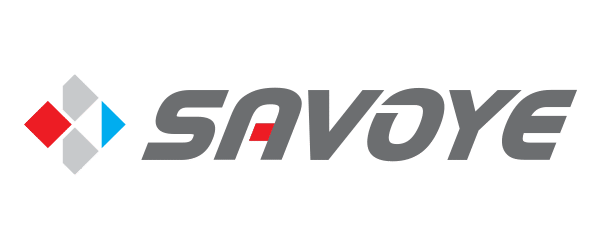Talk about a complicated industry! Within the world of supply chain management, there are complexities at every turn. From e-commerce deliveries, which consumers expect to be fast and free, to the distribution of food or pharmaceutical products, where temperature and safety are crucial, manufacturers and distributors have much to consider when choosing an intralogistics automated solutions long-term partner.
No one knows this better than Savoye. As a leading warehouse automation and supply chain management provider, the company serves distributors and manufacturers through three brands: A-SIS, INTELIS and PRODEX. Through these complementary brands, Savoye fills a wide range of needs: covering all logistic processes from goods-in, automated warehouse equipment, software, order picking, storage, sorting, packing… and the list goes on. There’s a lot to consider for the companies that hire them—so much, in fact, that it can take years for a business to decide to partner with any one of Savoye’s activities.
In other words…
Savoye’s sales and marketing teams are faced with a daunting responsibility. They need to be successful at not only courting potential customers for months or years on end, but be ready to upsell and cross-sell to current customers, too.
Today, the 650-employee supply chain company has a thriving customer relationship management process in place. But it took time to get there.
A struggle with spreadsheets
For a company built around such a sophisticated suite of solutions, it had become surprisingly difficult to juggle a complex array of needs at the individual customer level. Savoye’s sales, marketing and customer service departments were 100 employees strong, but each person was working with individual Excel files. This compartmentalized approach made it incredibly difficult—and often impossible—to get the information needed for successful sales calls and marketing outreach.
“A lot of people knew a lot of things, but there was no sharing,” explains Marie Merckaert, Savoye’s content marketing manager. “If someone went on holiday, there was no reliable way to access their customer data. The right communication is really important for our customers and prospects, and often for winning a project. So we really needed to put a new solution in place.”
As a result, Marie Merckaert and her colleagues set out to find a new customer experience (CX) platform.
Creating a blueprint
There’s been an explosion of CX solutions in recent years. And there are a lot of great tools to choose from. But Savoye understood the most critical component in its decision making process: the new CX platform would only be as effective as the people who used it.
So while decision makers knew they needed a solution capable of uniting teams and consolidating customer data, they also understood that the transition would be a big one. With numerous impacts for employees spread across multiple companies with wildly different cultures and methodologies, this was not a decision taken lightly. There was only one way to find a solution people would actually use: they needed to let the users help choose.
“It’s hard to force people to use a CRM, so it was really important to involve everyone in the project from the start,” says Marie Merckaert.
First, a committee was created. Representatives from the IT, marketing and sales departments were all invited to join. Next, interviews were held with staff to discover what people needed to be more productive. Then, after enough feedback had been collected, those interview insights were used to create a detailed list of specific features needed. Savoye then used this list as its blueprint to vet vendors.
Finding the ideal match
It didn’t take long for Savoye to land on Sugar. In addition to its strong global footprint, “there was a good balance between Sugar’s features and Savoye’s needs.”
What really sealed the deal was Sugar’s relationship with integration partner Synolia—an ideal advisor to guide Savoye in configuring the platform to meet the needs of all three companies.
“Synolia understood who we are, our specificities and our business,” says Merckaert. “They provided us with all of the answers we needed, and offered recommendations throughout the process. This made a big difference compared with other options we considered.”
Today, all 100 members of the sales and marketing departments rely on Sugar, and there are plans to expand to additional teams. Sales uses Sugar on a daily basis to support long purchasing cycles, manage and monitor performance and identify opportunities for upselling. Meanwhile, marketing is now able to target campaigns, measure ROI and send stronger leads to sales. It’s a win-win.
“We have long-term relationships with both prospects and customers,” Marie Merckaert says. “It can take years for a decision to be made, so it’s important to contact them regularly. There’s a lot riding on the customer experience.”
Now that information is regularly shared and accessible to all, it’s easy to let customers know when it’s time for an update or upgrade. Sales can quickly identify when a customer may be ready to add another feature to its portfolio of Savoye solutions, and every user is able to communicate personally and meaningfully with any customer.
“Because we have three different brands with complementary solutions, it’s not uncommon for customers to need all of them,” Marie Merckaert explains. “Thanks to Sugar, it’s easier for us to offer our customers relevant and complementary solutions from our range of products.”
Creating customers for life
“Previously, we were reactive,” Marie Merckaert says. “We didn’t have all the information we needed. With everything happening in Sugar, sales and marketing teams have been freed to devote time to customers and prospects.”
With such strong results across sales and marketing, it didn’t take long for Savoye to decide it should expand Sugar to other departments as well. Next up: Gain a better vision around commercial activities. Plans are underway to build out additional configurations and integrations for more financial reporting and forecasting.
“We want everything to come from Sugar,” Marie Merckaert says.
How can your company achieve similar results?
These days, it’s not enough to simply select a new customer experience solution. You need the platform that best matches your teams’ specific needs. But how do you go about finding the right CRM for your business? Marie Merckaert attributes Savoye’s success to three fundamental steps:
- Build a blueprint
“The most important step is to build a good blueprint. If you don’t have that, you won’t know where to go.” - Get everyone involved
“It’s a big risk if you invest in a solution that people will not use. Which is why it’s so important to involve the managers, directors and executives who will be driving user adoption—in addition to interviewing staff to understand what they need to be successful. Everyone has to be on board.” - Find the right partner
“It’s not enough to just choose a good solution. You also need a long-term partner to guide you through deployment and configurations. Sometimes companies don’t really think about this aspect, but it’s a big component.”

Sugar Partner
Synolia operates on multi-channel, international projects that involve a strong interaction with the entire IS of the merchants, (ERP, PIM, CRM or BI) thus building real global business platforms.
